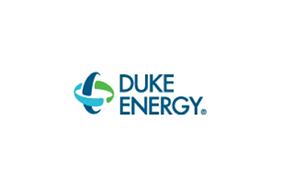A Conversation With Katherine Neebe of Duke Energy On the Evolving Role of the CSO
by Robert G. Eccles
Published 10-11-23
Submitted by Duke Energy

Originally published by Robert G. Eccles
Neebe: One of the reasons I came to Duke Energy is because we are leading one of the largest clean energy transitions in the country. Our mission is to power the lives of our customers and the vitality of our local communities. As energy demand doubles and possibly triples by 2050 across our service territory, we need to significantly grow energy generation, retire 16 gigawatts (GW) of coal, and modernize the energy grid. We need to do that in a way that provides reliable, affordable, and accessible energy while also meeting our net-zero ambition. The engineering, environmental, and social considerations to achieve this are significant. But there’s a real upside to the story too. As we look at our 10-year $145 billion capital spending plan, we anticipate that our clean energy transition is expected to bring roughly $250 billion in positive economic outputs, from job creation to property taxes.
But those benefits aren’t all future focused. For example, our economic development team continues to be successful in attracting growing companies to the communities we serve. In 2022 alone, the team secured 89 projects resulting in more than 29,000 new jobs and over $23 billion in capital investments. In addition, our supply chain spend is also an important avenue for strengthening local economies. Last year we spent $14 billion overall on supplier goods and services, more than $5 billion with local suppliers and over $1.8 billion with diverse suppliers.
Eccles: Let’s dig in a little on the energy industry. Duke Energy has ambitious climate goals. How are you driving change in your role?
Neebe: We have net-zero from electric generation goals by 2050 for Scope 1, 2, and certain Scope 3 carbon emissions and net-zero methane goal by 2030 for our natural gas business unit. That means that 95% of our calculated GHG footprint, from our own emissions to those across our value chain, is now encompassed in a net-zero goal. In 2022, we took additional steps toward action on climate change by targeting energy generated by coal to represent less than 5% of total generation by 2030 and to fully exit coal by 2035 as part of the largest planned coal fleet retirement in the industry. To date, Duke Energy has already seen a 44% reduction in Scope 1 carbon emissions from electricity generation since 2005.
With our net-zero goals established, we also need to consider the social issues affiliated with the clean energy transition from the impact of coal plant retirements (also known as the just transition) to where we site and build new infrastructure (including topics such as environmental justice and NIMBYism) to guardrails for those low-income customers who may be struggling with meeting basic needs. Again, I’d reinforce that there is a net positive economic upside to our clean energy transition; our role is to manage the risks and the value creation in a way that is balanced for our customers and communities.

Duke Energy
Duke Energy
Duke Energy (NYSE: DUK), a Fortune 150 company headquartered in Charlotte, N.C., is one of America’s largest energy holding companies. The company’s electric utilities serve 8.4 million customers in North Carolina, South Carolina, Florida, Indiana, Ohio and Kentucky, and collectively own 54,800 megawatts of energy capacity. Its natural gas utilities serve 1.7 million customers in North Carolina, South Carolina, Tennessee, Ohio and Kentucky.
Duke Energy is executing an ambitious energy transition, keeping customer reliability and value at the forefront as it builds a smarter energy future. The company is investing in major electric grid upgrades and cleaner generation, including natural gas, nuclear, renewables and energy storage.
More information is available at duke-energy.com and the Duke Energy News Center. Follow Duke Energy on X, LinkedIn, Instagram and Facebook, and visit illumination for stories about the people and innovations powering our energy transition.
More from Duke Energy

